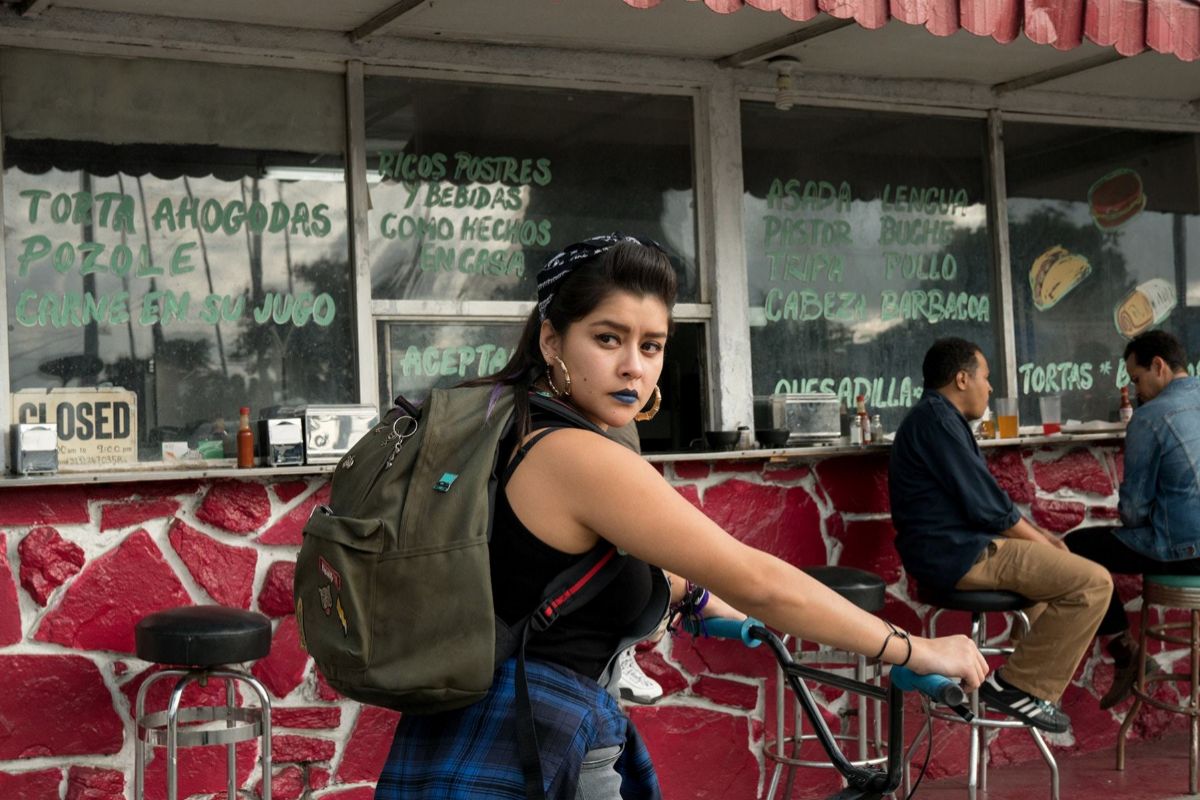DACA.Trump and the 'dreamers'
Interview .. Gloria Estefan: "Latinos are in the spotlight in the US"
Life
begins with an atypical heterosexual sex scene (then the lesbian will come) and a funeral.
It could seem like any city in Mexico, except that it is Los Angeles, that eastern area in which more than 90% of the population is Mexican.
Although in Spain it has passed without pain or glory,
Vida
broke schemes in the United States when StarzPlay premiered it in 2018:
a series made by Latin women, without topics
and absolutely transgressive.
In Vida there are no taboos: neither sexual, nor identity, nor linguistic.
Emblem of the Latin community and the LGTBI community at the same time,
millennial
and purely
Spanglish
, this is how this gem is that has hardly been talked about in Europe.
The plot: two radically opposite sisters, Lyn (
Melissa Barrera
) and Emma (
Mishel Prada
) meet again when their mother Vidalia unexpectedly dies.
As an inheritance, he bequeaths them a bar drowned in debts and an old building.
That, and the discovery that this hyper-masculine waitress is actually his stepmother.
A starting point for a
not so simple
sitcom
, in which the protagonists are the new Americans.
Not American enough, not Mexican enough.
A limbo that director and screenwriter
Tanya Saracho,
born in Mexico and raised in Texas, knows well.
Saracho was one of the founders of the Luna Theater in Chicago, a company of Latino actors who claimed roles outside the stereotypes of maid, gardener, drug dealer and / or thief, lover and / or prostitute, etc.
Life
is this:
growing up in the United States with a Hispanic tradition
behind it, exploring that balancing act of the Mexican-American second generation, something that is not generally seen in fiction.
Chelsea Rendon plays an anti-gentrification activist.
If
Tom Wolfe
portrayed the Cuban Hialeah in his
Bloody Miami
(where, by the way, Mishel Prada grew up), Vida does the same with
Boyle Heights, the little Los Angeles Mexico
, far from the surf life of Venice Beach, the glamor of Hollywood or the idyllic postcard of palm trees and sun.
The series is based on the short story
Pour Vida
by young writer
Richard Villegas Jr.
, who was born here in East Los Angeles.
against gentrification
When the two Hernández sisters return to the neighborhood where they grew up to refloat their mother's bar, they run into pressure from real estate companies, creditors and the rejection of their own.
They are too gringas, that is,
white-tinas:
Latinas with a light skin tone or, simply, too Americanized.
First neologism.
Then comes
people-fication:
when the gentrification process is due to high-wage Latinos themselves, who buy businesses and modernize (or standardize) the neighborhood with
cool
stores
, hipster bars and apartments that double the rents.
Latest neologism:
chipsters
(
hipster
chicanos).
This is
Life
in Los Angeles, where the traditional Mexican aesthetic murals disappear to make way for multinational advertisements.
But some mythical places, like the Hernández girls' bar, resist.
That was
Life,
too:
A Resistance Series
, though Starz canceled it after three seasons.
There is that other part of Los Angeles, so Hispanic, so American.
According to the criteria of The Trust Project
Know more
United States
Mexico
culture
immigration
MusicDies Mac Davis, composer of Elvis Presley's hits 'In the ghetto' and 'A little less conversation'
United StatesShoot two police officers point-blank out of the car window while on patrol in Los Angeles
San Sebastian Festival 'Anti-riot', the Spanish series of the year: hosts, instructions for use
See links of interest
Last News
English translator
TV programming
Quixote
Movies TV
Topics
Casademont Zaragoza - San Pablo Burgos
Real Madrid - Valencia Basket
Stage 7 of the Giro, live: Matera - Brindisi
Semifinals, live: Diego Schwartzman - Rafa Nadal
Zenit Saint Petersburg - Barça

